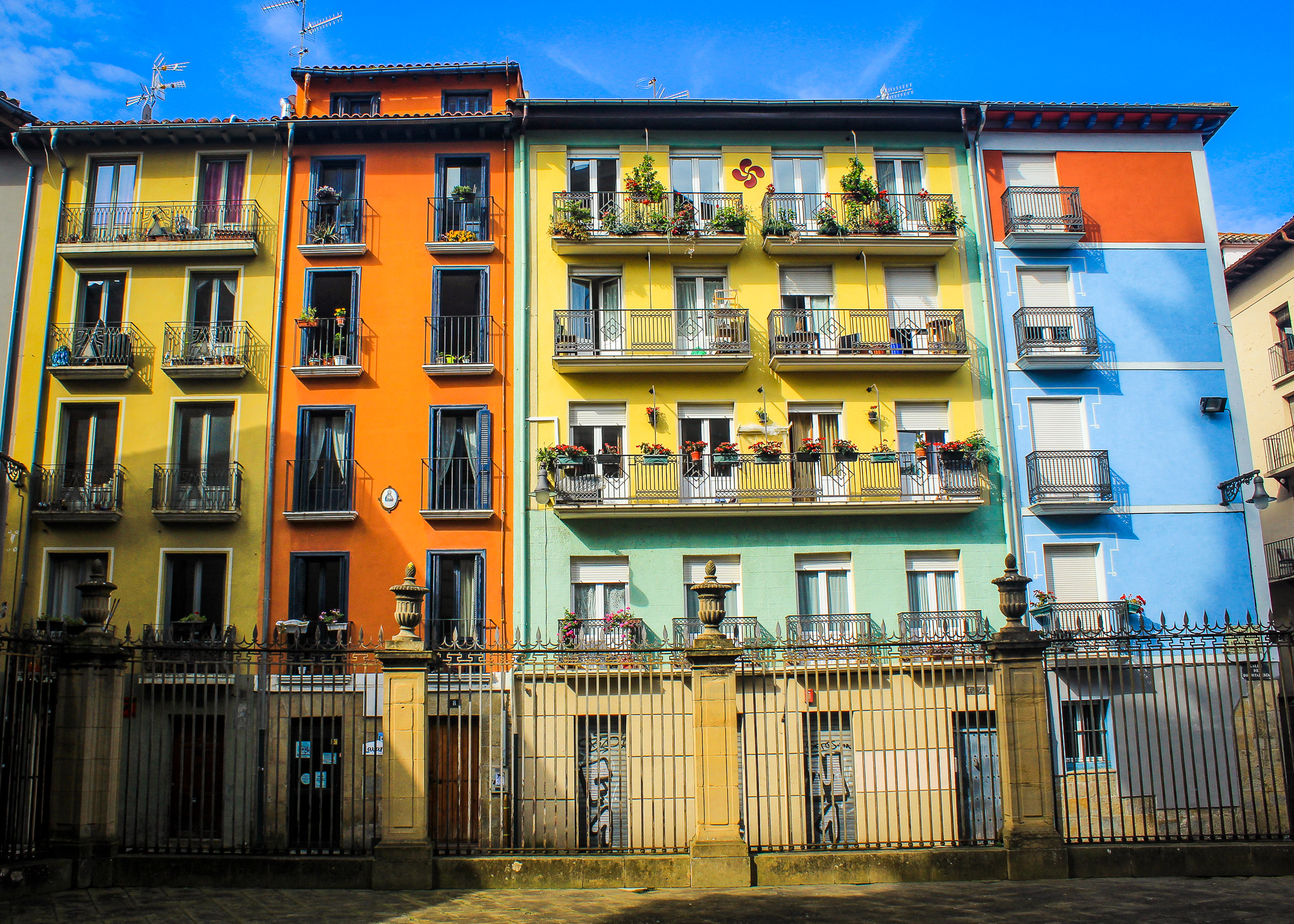Pompaelo was founded in 75BC by the Roman General Pompey, ally then enemy of Julius Caesar. He chose the site for its strategic location on the Rio Arga and at the foot of the Pyrenees.
A major trading post in the North of Spain with connections to the coast and to France, Pamplona is today a financial and commercial centre known as the ‘Gateway to the Camino Santiago de Compostela’ for pilgrims arriving on the traditional French Route.

Heavily fortified as a border town in the 15th century, its fortress walls are intact through a continual programme of restoration, allowing a three mile walk along their tops for spectacular views over the city and across to the mountains.
At the base of the southern side squats the remains of the Citadel, three surviving star-shaped bastions designed by the Italian engineer Giacomo Palearo in 1571 on the instruction of Felipe II.
Much of the northwest of Spain’s history is dominated by wars and feuding with neighbouring France. The Spanish and French Empires continually attacked each other at home and abroad, notably the Franco-Spanish wars of 1594 -1598 and 1635 – 1659, the War of Spanish Succession 1701 – 1714 and Napoleon leading the Peninsular War against Spain for seven years from 1807.

Throughout the centuries the Basque Country particularly fought against the rulers of Spain for the right to continue its culture and government autonomously. As late as 2011, a ceasefire was called by the violent campaigning separatist group, ETA, which fully disbanded in 2018.
To wander around Pamplona’s atmospheric Old Town is to feel the grandeur of its development through the Middle Ages with churches, palaces, fountains and market squares butting up against each other in winding, spiralling and cobbled streets.
The heyday of the Spanish Enlightenment introduced the tall residences of balconied and glass mirradored private houses in colourful terraces. Traces of turn of the 20th century Art Nouveau remain in elaborately sculptured and painted shop fronts.

Pamplona is famous worldwide for its annual encierro, a traditional Spanish event where bulls are released into local streets and people dressed in white and red clothing try to outrun them. It’s not a spectacle either of us wanted to witness so were grateful it won’t take place until July but already the Old Town was full of posters and banners promoting the event.
Simon, whilst in Pamplona to interview and record pilgrims walking the Way, explored the route of the bulls from the site of their overnight enclosure in corrals at the steep base of the walls of the Museo de Navarra along the Cuesta Santo Domingo.
Our man in Pamplona writes: “At 10am I had much of the old city to myself, only delivery drivers and council workers cleaning the cobbled streets for company.

I walked the entire route the running bulls would take, through narrower and narrower streets past the town hall and down the main shopping street, Estafeta. The half mile run ends at the second largest bullring in Spain where almost 20,000 people cram in.
I spent some time trying to fathom this peculiar event and was almost traumatised after watching a ‘welcome video’ at the Plaza del Toros. It showed in 3D the history of the San Fermin festivities including many of the ‘victims’ of the bulls.
It was hard to feel entirely sorry for those trampled in the wake of the angry animals, left to run for their lives through the intimidatingly close streets with thousands of people baying and hollering them on.

As two bulls were about to flatten half a dozen people who had tripped over, the doors opened to reveal the impressive stadium. I walked alone on the sand, a special blend to soak up blood and water, and realised how courageously brave or simply stupid bullfighters must be. There is nowhere to hide.
It was 28 degrees in bright sunshine but I felt a cold shiver as I turned 360 degrees and imagined the noise of the 20,000-strong crowd, baying for blood, mine or the bull’s? Two young matadors in training were being hollered at by an instructor. It was time to leave.

Hastening outside I discovered a large tour group of Americans, armed with headsets following a local guide. I knew this would provide some light relief so paused to overhear the conversation between Norm and Pammy (they all had name badges) and was amused to hear Pammy exclaim, “Hell Norm, they put these fences up to let the damn bulls run through the city every day at 8am”.
I chuckled my way to find some shade and a strong coffee and found it at the haunt of the most famous of bullfighting followers, Café Iruna in central Plaza del Castillo, beloved by Hemmingway.”

Gentler delights were to be savoured that evening in a tapas stroll around the bars circling the Cathedral of Santa Maria La Real.
Built over 300 years and remodelled several times, the Neo-Classical façade disguises a vast, Medieval brick columned interior reaching a towering 28 meters high in its knave. The quiet cloister, entered through beautifully carved 14th century gateways is considered a masterpiece of European Gothic style.


Our taste of Pamplona concluded at two busy bars where we joined others feasting on quite sizeable portions of toast stacked with roundels of cheese and fried onions, and aubergine and bacon.
There was also something rather tasty called ‘gulas’ on the pintxos menu at Mandana de la Ramos. It wasn’t until after I polished off the garlicky noodles that I discovered they were baby eels, controversially farmed for the last decade.
Moving on to more familiar seafood at Taberna Katuzana, we enjoyed three Basque scallops, toasted over an open fire barbecue and served with a glass of chilled Rueda white wine.
It seemed a suitable end to our introduction to the Gateway of the Camino de Santiago!



